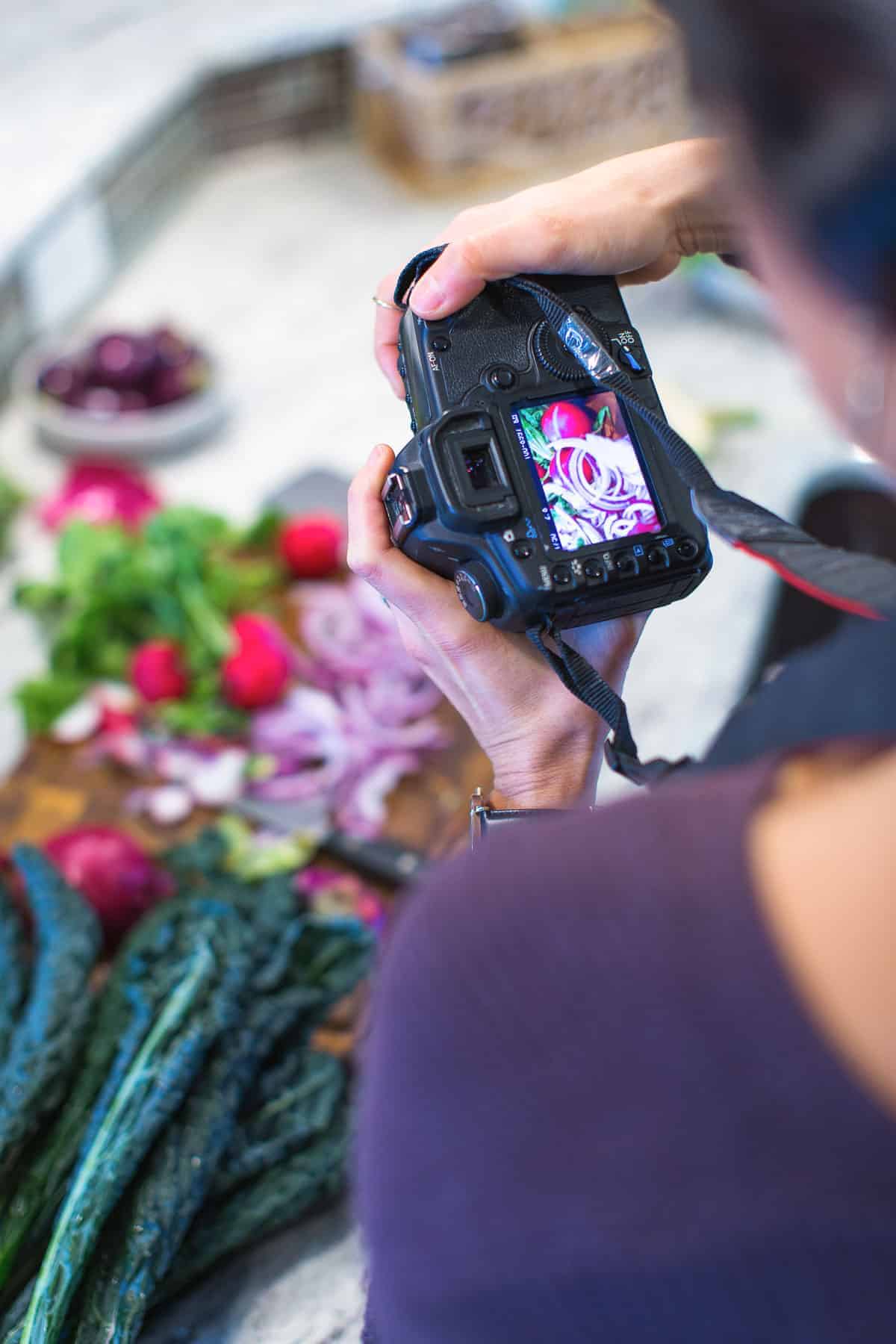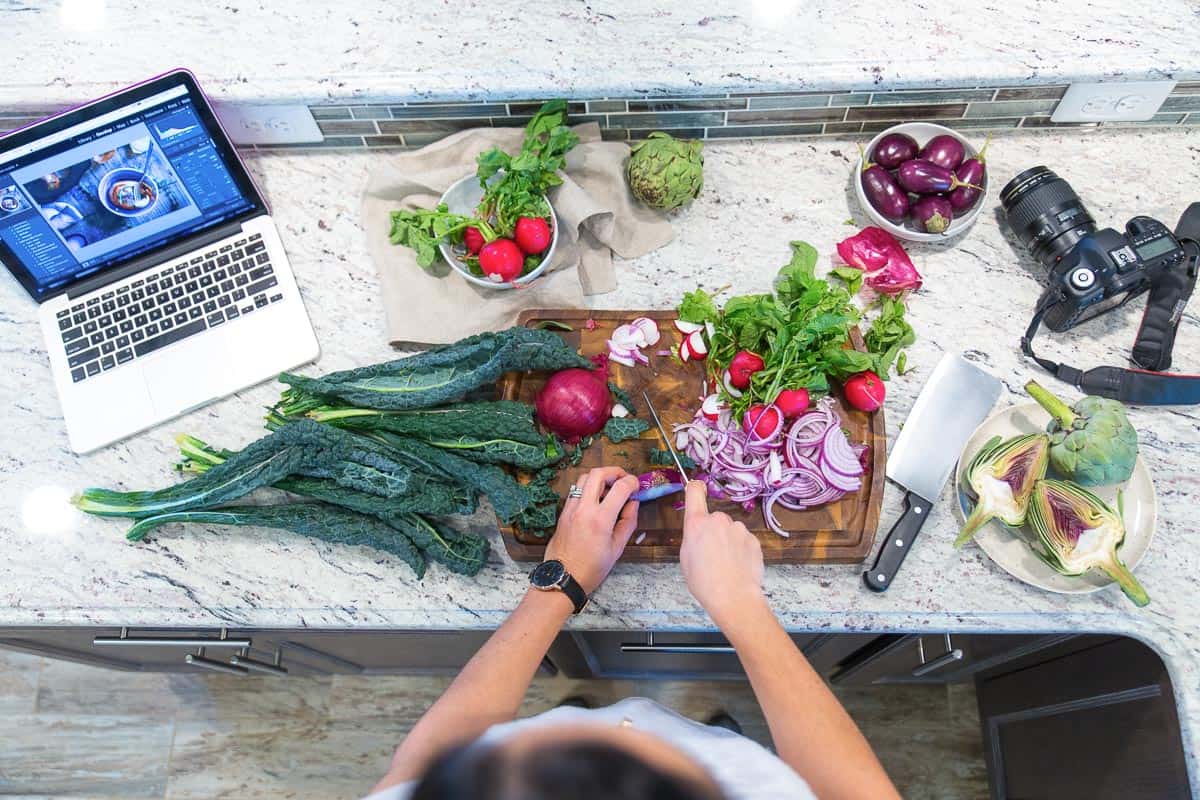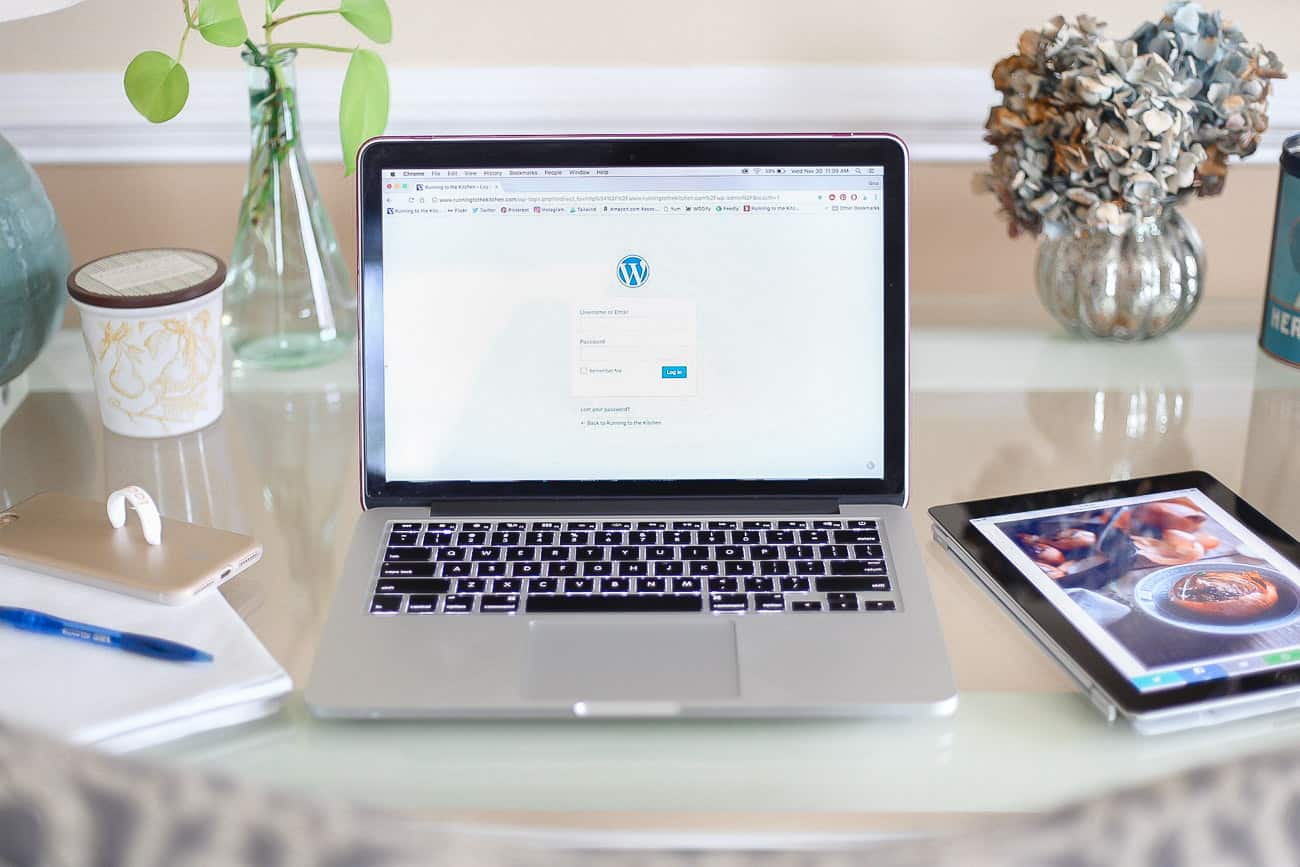Welcome to my food blogging resources page for bloggers or anyone interested in some of the back-end stuff of blogging. Below is a list of some of the more important products and services both blogging and photography related that I use on Running to the Kitchen. The list will likely change as I find different resources worth mentioning over time.
*Disclaimer: Please note that some of the links below are affiliate links and I will earn a commission if you purchase through those links. I use (or have used) all of the mentioned products and services and am recommending them because they are resources I couldn’t live without when it comes to this food blogging gig.
Food Photography Resources

Canon EOS 6D – I finally upgraded my camera in November 2014 from the Canon T3 (below) to the 6D. After using a friend’s during a day of shooting food combined with this Canon 100m macro lens (that I also bought and love!), the expense finally seemed justified. The camera has a much broader range of ISO settings, does really well at a high ISO, takes some crystal clear photos and has both wifi and gps capabilities (the latter of which I’m sure I’ll never use but the wifi is fun!).
Canon EOS T3 – This is the first DSLR I purchased in June 2011 and used until November 2014. It’s one of the most basic models Canon makes and it really can’t be beat for the price. I still use it as a back up when my 6D is being out for cleaning or if I need two cameras for a video shoot.
Canon 50mm f/1.8 – After using the stock lens that comes with the T3 for almost a year, I finally upgraded to this lens. Again, it’s not the best, most expensive one out there, but I think it can take some really great pictures and the price is just great. People say wonderful things about the 50mm f/1.4 but since I hardly ever shoot lower than f/2.2, I can’t seem to justify the extra expense of that lens. Going from a zoom to a prime lens was a little bit of an adjustment but now I love it.
Tamron AF 28-75mm f/2.8 – This is the one lens I own that’s not fixed. It’s so versatile and my go-to when I need to travel with my camera. Great for food as well as everything else you want to photograph. I couldn’t justify the price of the Canon 24-70mm f/2.8 and this is a great budget-friendly alternative.
Canon EF 100mm f/2.8 macro – This lens is amazing for close up shots of food. The detail and clarity is excellent. I tend to only use it for 1 or 2 shots in a post though because it’s nearly impossible to get an overhead shot with it or even a pull back (you end up having to stand in the other room to get far enough away). This one is pretty specific to food blogging but definitely a fun addition after you have one of the other types of lenses.
Vista Explorer 60inch Tripod – It took me almost 2 years to buy a tripod and after using it once and realizing I was essentially cutting the photos I needed to take in half during a photo-shoot since there was no more blur from my hands shaking, I was sold. Again, people will say you should spend hundreds on sturdy tripods, can’t say I agree with that. This $25 one works just fine.
Ravelli 70 inch Tripod – I upgraded my tripod in January of 2016 when this one was one major sale. I love the adjustable head and the smoothness of this one. It gives you the abilities of an overhead arm without the awkward arm thanks to the pistol grip head.
Western Digital 2TB External Hard Drive – With all the good photographs you’re now taking thanks to the equipment above, you want to make sure they’re saved in a safe place! I use this external drive to back-up all my photographs and transfer pictures off my computer monthly. It’s not my only back-up (definitely have more than one!) but it’s my main one.
DIY Distressed Wood Photography Boards – Placemats and floors can get boring after awhile when it comes to food photography. For about $30, I made 3 photo boards with some basics from the local hardware store. I’ve also since picked up some sticky tiles, slate pieces, 20×20 ceramic tiles for minimal cost for additional surfaces. This post walks through exactly how to make the boards.
Tasty Food Photography – Pinch of Yum is a site I’ve been reading and admiring for seemingly ever. When they released their ebook on photography, I bought it without hesitation. It’s a great reference for how to take your food photography to the next level. The best part is how they breakdown what can be complex and overwhelming photography terms into simple steps that anyone can understand. The ebook also comes with video how-tos and I think it’s worth every penny.
Food Blogger Resources

Food Blogger Pro – Food Blogger Pro is a central location for people that want to learn how to start and grow a food blog. There are two primary parts of site, the video training and the community forum. The videos provide easy-to-understands tips for getting started with your food blog and step-by-step instructions for how to do things like install advertising code, create a branded email address, or use the manual settings on your DSLR camera. The community forum is a place where you can go to get questions answered by other food bloggers.
Agathon – This is my current host and I literally have had nothing but a wonderful experience with them. Their plans are reasonably priced, their support is top-notch and they’re small enough that you don’t feel like just another site on their servers, but big enough to not have to worry.
Vaultpress – Vaultpress is the company I use to backup Running to the Kitchen. With almost 1,000 posts and pages of content written, there’s a lot of data at stake. Considering this is my full-time job now, losing data to a technological glitch would not be cool. Vaultpress ensures that if that something like that did happen I’d be able to recovery everything from a backup.
Flodesk – Flodesk is an email marketing software used to send out blog posts to subscribers. Most of us hate extraneous emails in our inboxes (me!) but apparently some people still like to keep up to date with blogs and websites via email lists. Flodesk is very user friendly and customizable to match your brand. This link gives you 50% off your first year!
Flickr – I talked about backing up my photographs above. In addition to the external hard drive backup, I have an unlimited account with Flickr where I upload pictures from every post for redundancy. At something like $25 a year, this can’t be beat for peace of mind and ease of grabbing an old shot that might not be on my computer any more.
WordPress Plugins

Anti-Spam – Spam sucks and spammers are no strangers to the comment section of blogs. This plugin is great at catching them and holding them for moderation until you can review.
Yoast SEO – Optimizing your posts for search engines is a must if you want people to find your content in searches. Yoast SEO is one of the top plugins for this helping you make sure you have good SEO practices in place with each blog post.
WPRM – This is what I use for the recipe section of my posts so that the recipe is styled and formatted as you see it and, more importantly, for search engines to “read” it as a recipe and therefore index it appropriately so people can find your content when searching. I’ve used a bunch of recipe plugins in the past and this one is by far the best supported with the most features out there.




